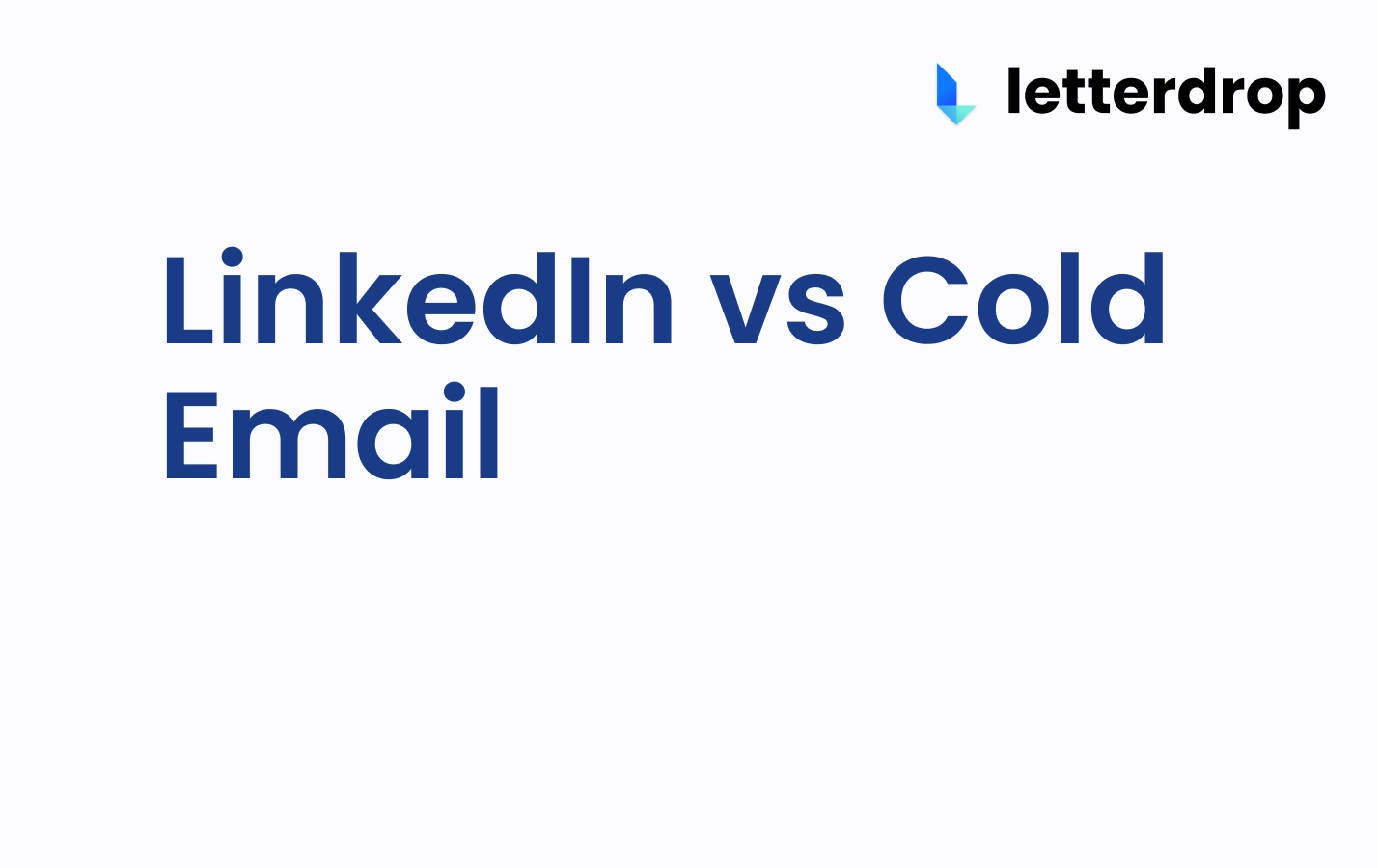How to Create LinkedIn Thought Leadership that Drives New Business
TL;DR:
- Creating thought leadership content requires more than just shock value
- Thought leadership helps establish authority and credibility in your industry, especially through LinkedIn
- Develop a strong point of view using the TAS framework
- Avoid being contrarian for the sake of it and engage meaningfully with your audience
- Distribute your thought leadership content through your execs and various channels for maximum impact
Making baseless claims for "shock value" and calling it thought leadership simply isn't enough to move the needle for your business.
Your thought leadership content needs to help cement your company's authority in the space and build warm opportunities.
And LinkedIn is the place to distribute the bulk of your thought leadership — buyers from multiple industries are active there, as this list of 123 top LinkedIn influencers in 10 different verticals proves.
Why LinkedIn Thought Leadership Matters
Thought leadership content focuses on delivering unique insights, opinions, and expertise from subject matter experts. Unlike traditional content marketing, it aims to educate and inspire rather than promote products directly.
It helps you:
- stand out in an oversaturated market through unique perspectives
- increase your visibility and credibility as more people begin to trust and share your content
This ultimately helps improve your reply and conversion rates, especially on a platform like LinkedIn that isn't as saturated as traditional channels.
What's more, LinkedIn's network effects serve to amplify your posts to thousands of prospects, especially if your entire team posts. You need only look at this basic calculation:
People posting (CEO, AEs, BDRs) x impressions with buyers / post x % buyers who see that and come inbound x inbound win rate
= $X revenue from inbound pipeline.

How to Create a Strong LinkedIn Thought Leadership Strategy
1. Establish a Strong Point of View
Poor research, content written solely by AI, and being contrarian for contrarian's sake are some common reasons why thought leadership fails.
A compelling point of view is a cornerstone thought leadership that works, and can help steer you in the right direction.
Companies like SparkToro and Intercom, for example, are known for consistent, data-driven thought leadership that demonstrates how POVs can elevate a brand's authority and influence in their space.
As a CEO or leader, you should have a clear stance on key industry issues. If you’re not the CEO, collaborate with them to articulate this perspective.
For example, one of our POVs is that "cold outbound is saturated, and reps need to build trust to get in front of prospects."
We use the TAS (thesis, antithesis, synthesis) framework to implement this POV in our posts.
- Thesis: Describe the current state of your industry or common practices. Pull these directly from customer conversations and sales calls (Letterdrop can do this for you automatically.)
- Antithesis: Highlight the opportunity cost of inaction and other problems with the current state.
- Synthesis: Present your solution or a new way of doing things. Show how you're unique and more effective than other solutions. Using customer clips as social proof works great here.

Avoid Being Contrarian for Its Own Sake
While it's important to have a unique perspective, avoid being contrarian just to stand out.
Your point of view should resonate with your audience and reflect something they are thinking. It must make sense and align with their experiences and challenges.
- Validate Your Ideas: Test your points of view in 1:1 conversations to see if they resonate. Gather feedback, address objections, and iterate on your ideas.
- Maintain Credibility: Ensure your perspectives are grounded in reality and supported by data or experiences. This builds trust and authority.
2. Build Your Thought Leadership Content Around These POVs
Your content should offer original ideas, deep insights, and practical advice set around your POVs.
Leading consulting firms like McKinsey, Deloitte, and Accenture excel in this area by creating extensive, high-quality business research and insights on current trends.
Here are some example formats (you can find more LinkedIn hooks and post templates here):
1. Counter-Narrative Opinions: Challenge prevailing industry assumptions with justifiable insights.

2. Experiences Relevant to Your ICP: Share relevant experiences and lessons learned to resonate on a personal level with your ICP.

3. Industry Analysis and Benchmark Reports: Share industry insights you've found through original research and that can't easily be copied.
Use proprietary media and infographics to share this kind of information.

4. Make Use of Customer Voices: Incorporate quotes, clips, and case studies from satisfied customers to add authenticity and credibility.

There are AI tools for thought leadership that you can use to help increase time to assets — if you use them properly.
At Letterdrop, we can help you generate defensible posts directly from call data or even from your own voice notes.
The tool can then:
- Interview you
- Generate better CTAs or hooks
- Refine the post according to your tone of voice

3. Engage Meaningfully with Your Audience
Part of being a thought leader is engaging with others' content.
Like and comment on people's posts — contribute to real conversations in the space.

4. Go for a Multi-Channel Distribution Approach
Distribution is just as important as creation. It’s best for thought leadership content to be shared by your founder and team members to put a face behind the ideas, which is why LinkedIn is such a key platform.
I talked about this with Rick Koleta on his podcast.
You should be using multiple channels for your distribution, however:
- Social Media: Share content on LinkedIn, Twitter, and other relevant platforms where your ICP hangs out.
- Email Newsletters: Distribute content created from blogs and other posts directly to your subscribers.
- Webinars and Podcasts: Engage with your audience through your own podcast as well as third-party podcasts and webinars. You can use these as a basis for content repurposing across other channels
5. (Optional) LinkedIn Thought Leader Ads Can Help
You might want to consider thought leader ads — these are sponsored posts from your employee profiles that tend to perform better. People trust people, after all.

Investing in thought leadership ads can really amplify your reach and position your company as an industry authority. When done right, they drive significant engagement and help nurture leads through your sales funnel.
For more details on how these ads work, their benefits, and how to create them, check out our full guide on LinkedIn thought leader ads.
How to Measure Thought Leadership Success
How do you measure social selling success in order to pitch a thought leadership article or post?
You need to be able to prove the value of your thought leadership efforts if you want to drive adoption.
While engagement metrics are important to monitor, it’s more about pipeline and revenue impact. Companies that invest in consistent LinkedIn activity often unlock $400K to $5M in additional Closed/Won revenue annually.
To measure ROI:
- Add “How Did You Hear About Us?” to inbound forms to capture LinkedIn as a source.
- Use UTM links in your profile and posts to track LinkedIn-driven traffic.
- Monitor engagement metrics like likes, comments, and profile views as first-party intent signals.
Thought Leadership on LinkedIn is the Future of GTM
It's more important than ever to stand out today, and truly unique thought leadership can help you do that.
We can help — our AI can help speed up the process to generating defensible thought leadership content, sourced from your sales calls and internal data.
Subscribe to newsletter
No-BS GTM strategies to build more pipeline in your inbox every week
Related Reading
Some other posts you might find helpful
















